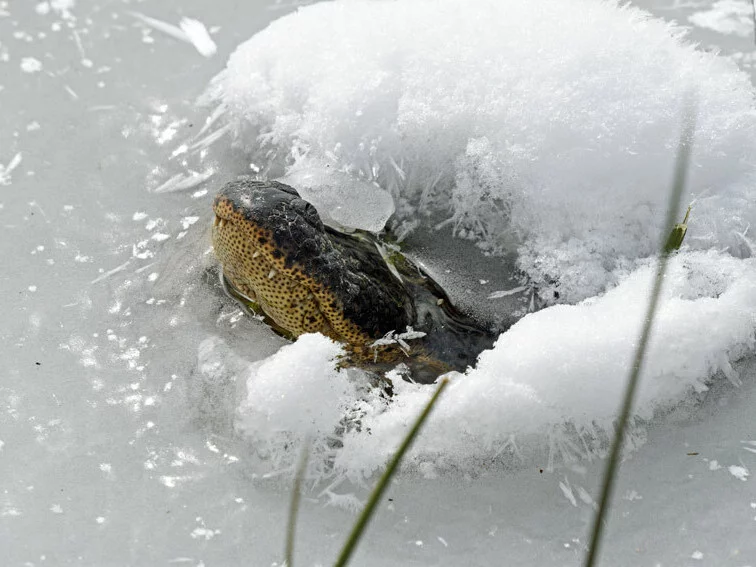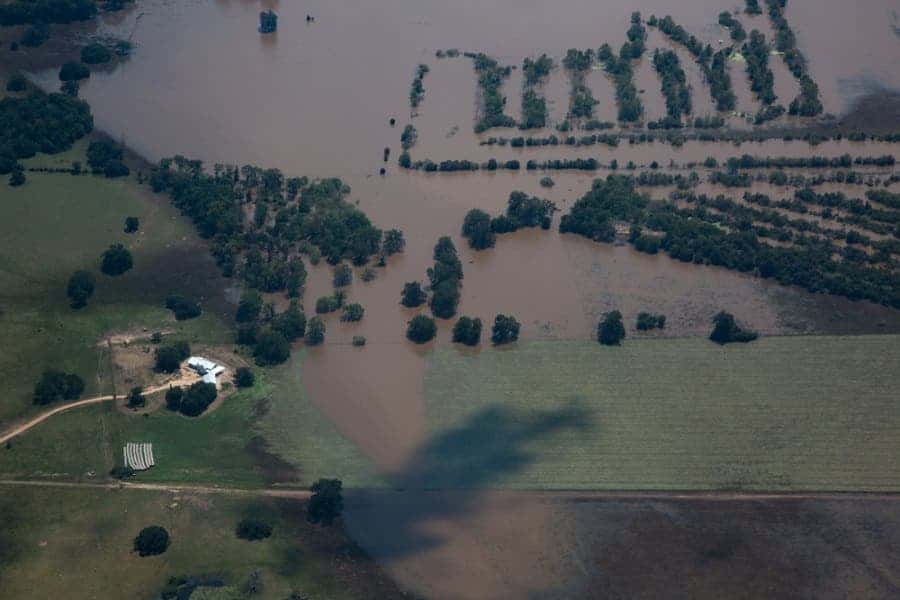
In the heart of Beaumont, Texas, a recent cold snap has revealed a remarkable survival strategy of the American alligator. Last week’s frigid temperatures, plummeting to a low of 18 degrees Fahrenheit, led to an astonishing natural phenomenon: alligators frozen underwater, yet still very much alive. Here’s how they pull it off.
Alligators are cold-blooded (ectothermic) creatures that have to rely on external sources of heat to regulate their body temperature. This is why you’ll often see these reptiles motionlessly basking in the sun. On cooler days, alligators might seek shallow waters which warm up more quickly than deeper areas.
But what happens when the weather turns really bad and reaches freezing temperatures? It sounds like the alligators don’t stand a chance — but that’s not the case at all.
Recently, a cold spell swept across the southern United States, freezing many lakes and waterways. TikTok user eddiehanhart123 was trekking around Beaumont when he noticed the sight of a lifetime: a small hole in the ice with an alligator’s snout protruding. He captured it all in a video, which soon went viral.
When the water bodies they inhabit start to freeze, alligators enter a state called brumation — a reptilian version of hibernation. During brumation, their metabolism slows dramatically. They don’t eat much, if at all, and their body processes slow down to conserve energy. This is what’s happening to this alligator.
As the surface of the water begins to freeze, they stick their snouts out, creating a natural snorkel. This behavior ensures that they can breathe even when encased in ice. It’s a remarkable adaptation that underscores the alligator’s resilience. So as long as these reptiles can keep their snouts above water, they can easily survive freezing temperatures despite being cold-blooded.
During warmer days, these ectothermic creatures will momentarily emerge from their frozen state to bask in the sun, reactivating their metabolism. This is the main difference between brumation and the deeper sleep of hibernation in which animals are immobilized for extended periods.
In Texas, the Texas Parks and Wildlife Department notes that alligators typically enter brumation from mid-October until March. Look out for snouts sticking out of ice holes over the coming months if you’re in the area.






